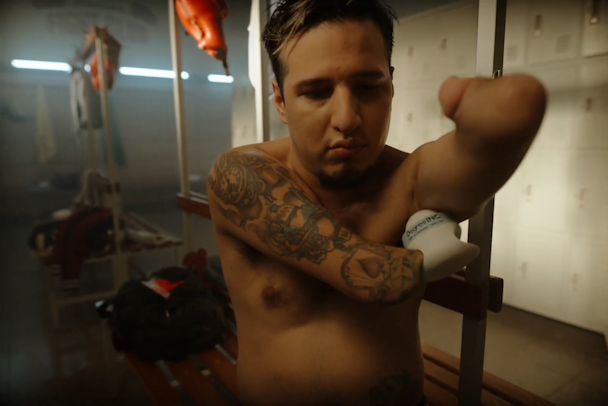Brands have the tools to make disability-inclusive content – it’s time to use them
To mark the 2021 International Day of Disabled Persons, Wunderman Thompson’s Patrick Kane discusses how brands can better reach people with disabilities.

Unilever’s ‘Degree Inclusive’ campaign saw the CPG firm make a more tactile deodorant packaging
With an estimated population of 1.85 billion, people with disabilities (PWD) constitute an emerging market the size of China plus the European Union. Their friends and family add another 3.4 billion potential consumers who act on their emotional connection to PWD. Together, they control over $13tn in annual disposable income (RoD Group). This is not a market that brands can ignore.
So, as a disabled person who has recently entered the advertising industry, I’m encouraged to see that some brands and agencies are making the most of new technologies to properly address diversity and inclusion. By ‘properly’ I mean that representation isn’t reduced to an act of tokenism, patronization or exploitation, but instead illuminates real challenges with real stories – and elevates them to the public spaces where they need to be seen.
Indeed, there are many recent campaigns that thoughtfully and appropriately include disabled people. The award-winning design work for Unilever’s ’Degree Inclusive’ deodorant and the ‘A Very Big Caveat’ campaign show that when done correctly, there is huge potential to tap into this audience with great impact.
As Kantar’s Daren Poole has said: “Rather than being a mirror on society, advertising has a powerful ability to shape it.” And if we consider technology as the foundation of today’s advertising ecosystem, we have more power than ever before.
Never was this truer than when, in the face of the onset of Covid, technology helped us to confront the importance of accessible working, with businesses across the world having an enforced period to trial the kind of format that the disabled community has long been calling out for. And there are other examples in recent history that demonstrate how what was deemed inclusive technology has become mainstream. The typewriter was invented so that a blind person could send letters to distant family members, and the touch screen was also developed for those who struggled to press individual buttons.
So now that representation of the PWD community is high on the marketing agenda – with the likes of the genuinely inclusive campaigns cited above – how can technology help brands to really walk the talk?
In today’s experience economy dynamic, seamless and personalized digital experiences are an expectation. In fact, the customer experience is the product and every business is an experience business. Marketers are already struggling to cope with the never-ending demand for content that is required to fuel these customer experiences in a multichannel world. Factor in the responsibilities of compliance – be it DE&I, regulatory compliance, brand governance and even channel compliance – and the task becomes even more daunting.
According to a B2B marketing study by Gleanster Research and Upland Software, 92% of marketers point to approval delays as a cause of missed deadlines. When you consider the content variants required to fulfil just one multichannel, personalized campaign, this is not surprising. When you factor in the scale of, for instance, a global CPG giant, the extent of the challenge is vast.
However, thanks to artificial intelligence (AI) and machine learning, brands can now address the diversity and accessibility of their content and assure both its quality and consistency. Tools such as WPP Open Brand Guardian created by Wunderman Thompson are helping brands steer inclusive representation at much greater speed and scale than has been possible before.
Brand Guardian is an AI-driven platform that gives marketing, creative and production teams total content quality management at scale. It connects with existing creative and content toolsets and reviews assets such as images, videos and text to provide insights on how inclusive and accessible they are. This means that D&I can be baked into the creative process from the very beginning, helping brands drive better representation throughout their work.
It has long been said that necessity is the mother of invention. This remains true, but the rate of change and breadth of invention we are seeing shows that we are finally becoming aware of just how necessary change is. As tools such as AI become commonplace, it is our communal responsibility to ensure that we use them to entrench inclusion firmly in brand DNA, so that we can build brands that resonate with and connect to all customers.
Patrick Kane is a catalyst fellow at Wunderman Thompson.
